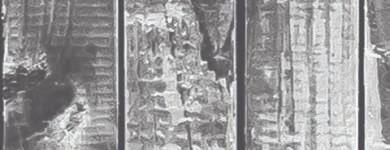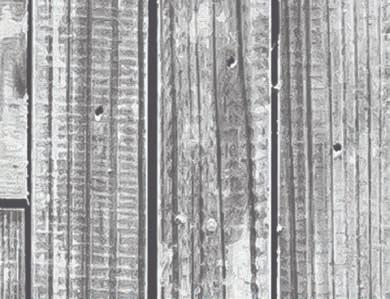
5 minute read
More ‘eyes’ on the network to stop power cuts before they happen
from ECN March 2021
Futuristic technology designed to prevent power cuts is being trialled by UK Power Networks.
Britain’s biggest electricity distributor is testing Distribution Fault Anticipation (DFA) technology in the South East and East of England as a way to spot network faults, before they interrupt people’s supplies. The DFA-Plus device monitors voltage and current on electricity circuits and matches any abnormal waveforms with a library of most likely causes.
Advertisement
The system works at high sampling rates to detect even tiny disturbances on the network that are not usually visible using traditional network protection devices. During testing, the technology revealed disturbances on two separate cable terminations, up to eight weeks before they interrupted power supplies. It also showed that when third party workers accidentally damaged the outer sheath of a high voltage cable (though not sufficient to cause the circuit to trip) the DFA detected disturbances on the cable and it faulted weeks later.
The trial is a collaboration between UK Power Networks, Scottish and Southern Electricity Networks, Lord Consulting in New Zealand, Nortech Management Limited and Energy Innovation Centre, funded by Ofgem’s Network Innovation Allowance.
UK Power Networks has installed 10 devices, each about the size of a small games console, at primary substations. Each one continuously monitors an 11,000 or 33,000-volt electricity circuit up to several kilometres long, serving thousands of homes and businesses. The sites include Aldreth in Cambridgeshire, Bungay in Suffolk, Canterbury, Chartham, New Romney, Broad Oak and Strood in Kent. Engineers will install one more at Caddington in Bedfordshire, and plan to order five more.
Chino Atako, Senior Asset Engineer at UK Power Networks, says: “The advantage of using these units is that we now have more eyes on the network to see things we wouldn’t normally be able to see - which could enable a quicker, cheaper, more proactive approach to fault location and repairs.
“Traditionally, repairs are carried out after a fault which has led to customers losing supplies, but such events are preceded by pre-fault events we cannot usually see. If we can identify these we can further increase the reliability and efficiency of our network and cut the cost of repairs.”
There are also post-fault advantages to the approach. For example, if a cable trips out due to contact with a tree branch, engineers would usually need to patrol the whole route before they can complete repairs, but in the trial they are using fault passage indicators to pinpoint the fault location to within a few hundred metres. This technology has the potential to reduce costs because engineers only need to patrol a few hundred metres of power lines, rather than several kilometres and they can carry out pre-emptive fault repairs on components before they lead to a more significant failure.
Nathan Dyke, Innovation Engineer at the EIC, says: “This project is a fantastic example of our electricity network partners collaborating with innovators from the UK and across the globe, to explore solutions that could improve customers’ lives and build an even more resilient energy network.
“I’m really excited to see the benefits that this technology could have for customers, especially for those most vulnerable, in preventing power outages to their homes. Now more than ever, it is crucial that supply remains uninterrupted and that we all stay connected.”
Project partners, Scottish and Southern Electricity Networks (SSEN), will install 15 individual units on its southern network, which serves 3.1 million customers across areas including Berkshire, Hampshire, Oxfordshire, Wiltshire and West London.
George Simopoulos, SSEN’s Innovation Project Manager says: “SSEN embraces the use of cutting-edge technology on our network that can improve both the service and power supply we provide to our customers, and the efficient and safe working practices of our engineers.
“The ability to monitor our network - and therefore pre-empt potential power cuts – greatly reduces the risk of unplanned outages, enables us to act quickly when issues are highlighted through the DFA system and reassures our customers that we are proactively using innovative systems to provide them with a more resilient power supply.
“Taking part in this programme and sharing knowledge with our partners in this year-long trial is a great example of collaborative working to benefit many millions of homes and businesses in southern England.”
The trial runs until February 2022 when the team aims to validate the approach that faults can be pre-empted by monitoring high voltage feeders in real time at very high sample rates.
UK Power Networks’ Senior Protection Engineer, John Holmes, with a DFA-plus device commissioned at a substation














































